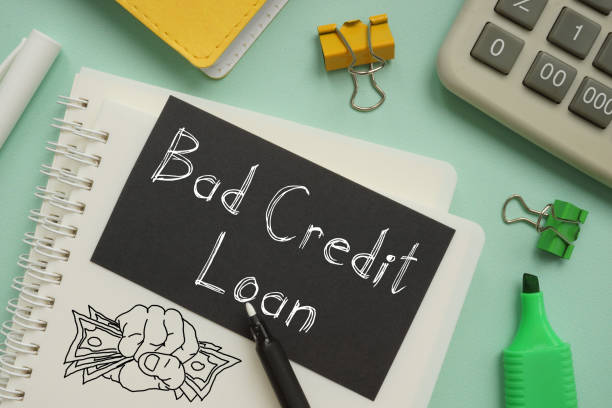Coping with home improvement costs is not an easy task. No matter how many DIYs you incorporate, the overall expenses might increase at any time. You cannot have backup cash always available to tackle any emergency.
What should you do to overcome any situation like this? Getting financial support from lenders can be an option. However, you might have some setbacks to feel reluctant to approach a lender.
These could be in the form of low credit scores. However, not to worry as home improvement loans with bad credit are easily accessible for you. These loans have nothing to do with your credit scores.
The whole process of direct lending revolves around the affordability of the borrower. If you can make sure about paying back loans on time, the likelihood of getting loans would be high. Now, the burning question emerges i.e. how much you should borrow.
Every borrower has a unique situation and thus there is no amount fixed for everybody. Depending on the individual situation, the loan amount should alter. Other factors like purpose, rates and repayment terms also play a crucial role in determining the ideal amount of loan.
At times, you might need a small amount of loan for trivial upgradation work. On the other hand, you might assume to borrow a significant amount. All these can influence the borrowing extent.
Look at the various factors you must pay attention to understand the borrowing amount.
Get clarity on the amount you should borrow for home improvement
You must know that the lender is also a key factor in deciding the amount you must get. This is because not all loan providers are ready to offer you the same amount. They might refer to different parameters to understand your financial stability.
Your creditworthiness is one of the factors that many lenders consider. Take a tour of the pointers that can affect the amount you should borrow.
- Overall cost of loans for home improvement
While deciding the amount you should borrow, you will surely like to ascertain the rate of interest. After all, you have to pay back loans. If the total amount to be paid back is unaffordable, you cannot repay loans on time.
The rate of interest might vary and can be as mentioned in the below table. This is just for your reference as you can pre-qualify to confirm rates before applying finally.
| Repayment term | Loan amount (£ 5000 to £ 9999) | Loan amount (£ 10000 to £ 24999) |
| 24 – 36 months | 6.49% to 8.49% | 3.99% to 6.99% |
| 37 – 48 months | 7.24% to 9.24% | 5.74% to 7.74% |
| 49 – 60 months | 7.74% to 9.74% | 6.24% to 8.24% |
This table shows how the rate of interest could be different once you change the loan amount. In the reverse way, you can the interest rates as a reference point to understand the ideal amount. You can make the most out of the pre-approval facility in this regard.
- Length of repayment
The given table also demonstrates how the rate of interest changes with varying repayment terms. Even though you keep the term constant, you can spot the differences in interest rates with changing amounts of loans.
Are you finding this evaluation somewhat complex? This is because you are focusing on too many things at the same time. Out of these three parameters, keep two of them variable while anyone is constant.
You will be able to see some variations. This happens even when you approach different lenders for the same amount of loan. You must alter the vital factors to create a unique composition that has the right amount, perfect term and pocket-friendly rates.
- Presence of a guarantor
For that, you need to understand when you should produce a guarantor. If you have poor credit history and need a huge amount for the home improvement project, the lender might impose this condition. Here, your financial stability is not considerable.
The loan provider cannot make sure about loan repayments. However, you cannot extend your requirement to borrow a sizeable amount by applying for loans without a guarantor. The direct lender will get ready to offer help by overlooking your bad credit tags.
In this scenario, they will not be interested in increasing the risk by offering a big amount. If you have convincing affordability, getting a small amount suitable for trivial needs will not be difficult.
- Value of your property
If the value of the home increases with time, it can earn you an opportunity to borrow a suitable amount for home improvement. However, the reverse might also happen thereby lowering your potential to borrow.
Again, it will depend on the lender who will be responsible for giving weightage to this factor. If the loan provider purely focuses on your financial ability, getting the desired amount should not be a problem.
- The location of your property
Wondering how the location can influence the loan value? It again impacts the value of the home which can affect the borrowing extent. If your home is located in a place where all the amenities are perfect, it will automatically raise the value of your home.
Further, this will impact the amount of loan that the lender would be interested in offering you. Therefore, your location can also play a role in determining the amount of loan you can qualify for.
- Your ongoing financial condition
If you have read so far, this pointer must have grabbed your attention. Many times, it has been mentioned how your present financial condition can influence the lender’s decision. Your past credit scores get the least weightage.
Modern-day lenders are more inclined to validate how well the borrower is handling the present payments. This way, they can confirm if the loan applicant can be a responsible borrower or not. Despite the fact that they had issues with missed payments, the present financial stability factor can be a game-changer for them.
The bottom line
If you are wondering how you should calculate and find the ideal amount to borrow for home improvement, no fixed formula is there. A few factors will be responsible to decide the extent that is favourable for you to borrow.

Mark Williams works as one of the Loan Advisors at a direct lender firm, Onestoploansolution. He has been working with the lender for about 15 years. He has been known to facilitate his employer in remarkable ways from writing to consulting and whatnot. He is a professional who wants to explore more of the UK financial market, the loan products and how customer requirement changes with time.






